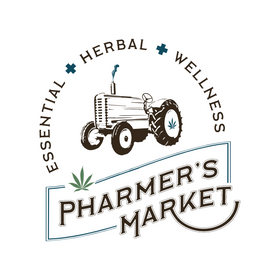Third Party Test Results
ALL SAMPLE THIRD PARTY TEST RESULTS CAN BE FOUND ON EACH PRODUCT PAGE.

Hemp and cannabis products are now required to have QR codes that link you to full panel laboratory test results or COA’s (certificate of analysis), but what does all that data and all of those numbers mean?
Product Name - You should always verify that the name of the product on the test results matches the product in hand
Manufacturer Information – The product information will clearly identify who made the product or who the product is manufactured for. Some states also require the manufacturing license number to be included with the name and address.
Batch Number – The batch number on the product will identify which batch of products your specific product belongs to. This helps trace back to the origins of the product.
Production Date – This will indicate when the product was made.
Unit Weight/Size – This will tell you the size of the product being sampled. This will help you in determining the potency per unit, if not provided.
Total CBD and THC – This is a quick summary of the potency of the two major cannabinoids as required by state and federal laws. It is a quick indication of how strong your product is.
ALERT! Total THC must be under 0.3% to be federally compliant with the 2018 Farm Bill.

Cannabinoid Analysis
% vs. mg/g – This tells you how strong the product is. There is a connection between the potency percentage and the mg/g in a product. A quick trick to convert a % to mg/g is to move the decimal point to the right by one. (For example: 0.2% would equal 2 milligrams per gram)
mg/g vs. mg/ml – If you purchased hemp flower or edibles the amount of CBD or THC, along with other minor cannabinoids would be listed as milligrams per gram (mg/g).
If you were to buy a liquid product such as tinctures or topicals, the density affects the potency per dose. Therefore, the accurate dose would be listed as milligrams per milliliter (mg/ml).
mg/unit – This is an indication of how many milligrams of a cannabinoid are in a product. This is done by multiplying the number of grams by mg/g or mg/ml depending on the product type.
Understanding LOQ versus LOD
LOQ (less than the limit of quantification) means that a compound was detected, but in such a small amount that it’s too small to report on the test analysis.
LOD (less than the limit of detection) means that the compound wasn’t detected at all in the test results.
So what does that mean? THC-Free products that register as LOQ could potentially have small untraceable amounts of THC.

What does full panel testing mean?
To get a full understanding that your product is safe, you want to make sure the products are full panel tested for their product type. Here is a quick look at the other testing types:
Pesticides- Indicates if there are any pesticides and if so, how much. Each state has its own allowable level.
Residual Solvents- Shows if there are any harmful solvents remaining in the oil left behind from extraction.
Heavy Metals - Prior to planting, farmers will test their soil for heavy metals to guide them to see if remediation will be needed. This test is then repeated after extraction when used in ingestible or inhalation product.
Terpenes- A measurement of terpene levels within flower or full spectrum oil products. This helps give insight into the flavor and smell of the product.
Myco-Toxins- Assays for fungal derived toxins, such as mold or fungal spores that may have entered the product during the growing or manufacturing process.
Microbials- A measurement of microscopic bacteria such as salmonella or e-coli
Although state specific, here are the most common required tests are: Potency, Pesticide, Residual Solvents, Heavy Metals, Myco-toxins, Microbial
Other Testing Types: Terpenes, Water Activity, Moisture
Some states allow manufacturers to use certain test results from the ingredients in lieu of having to retest the final product. It is best when a full panel test is also done on the final product, not just on the ingredients.
However, if it is not provided, looking for the full panel test results on the hemp extract used in the product will verify this information as well.



